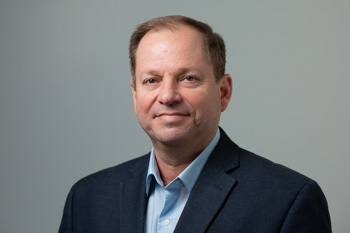
Project Name:
Experimental and Numerical Study to Improve Damage and Loss Estimation due to Overland Wave and Surge Hazards on Near-Coast Structures: Evaluation of Building Fragilities and Mitigation Alternatives for HAZUS-MH, including Engineering with Nature for Surge and Wave AttenuationOther Research Participants/Partners:
Dan Cox, Oregon State University; Robert Twilley, LSU; Carol Friedland, LSU; Ismael Pagan-Trinidad, UPRM; Carla Lopez, UPRMProject Description:
We will demonstrate the effectiveness of the new damage functions developed in Year 1-6 for predicting hurricane surge and wave impacts to residential and commercial structures. We will validate with observed damage data from Hurricane Michael impacts to Mexico Beach, Florida. We will collaborate with LSU and UPRM to incorporate Engineering with Nature (mangroves) in mitigation planning and stakeholder engagement.
Research Interests:
Dr. John W. van de Lindt is the Harold H. Short Endowed Chair Professor in the Department of Civil and Environmental Engineering at Colorado State University. Over the last two decades, Dr. van de Lindt’s research program has sought to improve the built environment by making structures and structural systems perform to the level expected by their occupants, government, and the public. This has been primarily through the development of performance-based engineering and test bed applications of building systems for earthquakes, hurricanes, tsunamis, tornadoes and floods. To accomplish this has necessitated coupling nonlinear dynamics, including stochastic approaches in both time and space with structural reliability during extreme loading events. His work includes both the development of new nonlinear numerical models and a large number of experimental investigations to calibrate those models and support hypotheses. Dr. van de Lindt current serves as the Co-director for the National Institute of Standards and Technology-funded Center of Excellence for Risk-Based Community Resilience Planning headquartered at Colorado State University. The NIST COE is a 10-university collaboration and seeks to develop the computation environment needed to enable quantification of community resiliency to natural hazards. He has published more than 400 technical articles resulting from approximately 45 federal, state, and industry sponsored projects.
Presentations and Reports:
2016 Annual Meeting presentation
2017 Annual Meeting presentation
2018 Annual Meeting presentation
2019 Annual Meeting presentation
2020 Annual Meeting presentation
2021 Annual Meeting presentation
Year 1 Annual Report
Year 2 Annual Report
Year 3 Annual Report
Year 4 Annual Report
Year 5 Annual Report
In the News:
CRC news:
Summer center exchanges offer valuable experiences, produce event winners
CRC prepares for annual summer research exchanges
For third year, summer programs pair education projects with research
CRC students win honors, start careers in Homeland Security professional fields
Students participate in second annual summer exchange program
Students, faculty to exchange for summer research programs
Coastal Resilience Center researchers ‘making waves’ in hurricane mitigation
Students working with CRC investigators for SUMmer Research EXperience
April 28 webinar focuses on community resilience
Media appearances:
How much could stilts help a building survive a tsunami or hurricane storm surge?
OSU making waves with hurricane resilience test
